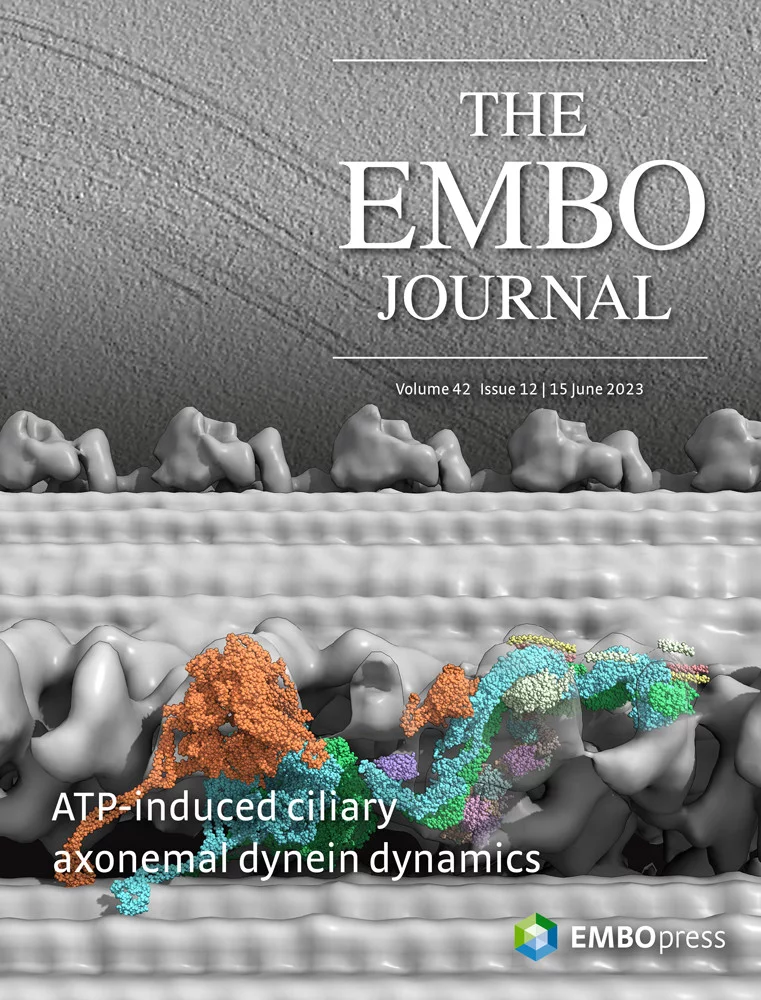Using cryo-electron tomography, researchers have uncovered details of how the dynein motor protein drives cilia to beat. Understanding this motion may help to tackle health problems that affect cilia, which range from fertility issues to lung disease and COVID-19.
The outside of many eukaryotic cells are covered in hair-like organelles known as cilia. In the human body, their rhythmic movements – or beating – serve some fascinating jobs. Waving like arms, they are responsible for pushing the egg along the oviduct. They also give sperm their tails; thus playing roles in both women’s and men’s fertility. In the throat, like bristles on a brush, they sweep viruses and dust out of our airways. Their dysfunction is linked to various types of lung disease, and indeed COVID19 is known to target cells in the airways possessing cilia. In embryos, the beating of cilia helps to establish left-right asymmetry.
Although researchers know a lot about the roles of cilia, less is known about how they beat. Yet understanding the mechanisms of their motion is important to understanding their function – and, eventually, developing treatments linked to their malfunction. Now, using cryo-electron tomography, scientists from Paul Scherrer Institute PSI have shed new light on their motion.
How do Cilia move?
Takashi Ishikawa raises his arm, moves it quickly down and then whips it back up. “This is the metachronal motion of a cilium,” he explains. Cilia don’t perform this movement in isolation. The term metachronal describes a type of sequential motion. On one cell, hundreds of cilia beat in turn like a Mexican wave. “We want to understand this beautiful motion,” says Ishikawa, whose research group at the Paul Scherrer Institute PSI is investigating the cellular and molecular structural biology of eukaryotic cilia.
In a recent publication in The EMBO Journal, the research group describes the mechanism of the motor that drives the cilia: a protein called dynein. The name comes from the word ‘dyne’ – a unit for force.
Cilia consist of an outer structure of nine pairs of microtubules, long tube like molecules that are part of the cell cytoskeleton, arranged into a circle. Connecting them are hundreds of dynein motor proteins. The source of energy for the motor protein dynein is the universal energy-currency of the cell, ATP. When dynein hydrolyses a molecule of ATP, it changes shape, dragging the microtubule on to which it is anchored and causes the microtubule pair to bend.
Cryo-electron tomography reveals motion of the dynein motor protein
In the latest study, the researchers were interested in how dynein generates its force. To investigate this, they focused on the detailed motion of part of the motor protein known as the outer dynein arms, which is responsible mainly for force generation.
The researchers investigated the different conformations the outer dynein arm makes during cilia beating using a technique called cryo-electron tomography. This is a version of cryo-electron microscopy in which samples are tilted to create 3D image reconstructions.
PhD student and study first author Noemi Zimmermann isolated the outer beating part of cilia – known as the axoneme - from the cell body of plankton. This is the part that contains the dynein motor protein. Its motion in plankton is identical to in our body. The researchers then added ATP to make the motors move. “Amazingly, when you add ATP to isolated axonemes, they still beat – just like a mechanical part,” explains Zimmerman.
They then rapidly froze the samples in liquid nitrogen. Taking millions of electron microscopy images at different tilt angles, they could piece together the motion of the outer dynein arm. Similar to the different phases of the swimming stroke front crawl, dynein generates force in a procedure known as the power stroke cycle.
The researchers were able to describe very precisely conformations of the outer dynein arm during different phases of this movement. In particular, they identified several intermediate conformations that were previously unknown, which showed how anchorings of the protein on the microtubule cross over at the beginning of the cycle. “This was quite a surprise, because it was not how most people expected it would work,” says Zimmerman.
How do dyneins talk to each other?
This piece of research adds one piece to the mammoth jigsaw puzzle that is the complex motion of the cilia. On each cilia, hundreds of dynein motor proteins must work together like synchronised swimmers to coordinate the bending of the microtubules so that the cilia beat. “If they are just randomly making the force, it will not end up with orchestrated motion,” says Ishikawa. How the dynein proteins cross-talk to achieve this feat is another fascinating question that Ishikawa and his team are currently trying to answer.
Text: Paul Scherrer Institute / Miriam Arrell
© PSI provides image and/or video material free of charge for media coverage of the content of the above text. Use of this material for other purposes is not permitted. This also includes the transfer of the image and video material into databases as well as sale by third parties.
Contact
Dr. Takashi Ishikawa
Group Leader Cellular structural biology and imaging
Paul Scherrer Institute PSI
+41 56 310 42 17
takashi.ishikawa@psi.ch
Original Publication
ATP-induced conformational change of axonemal outer dynein arms revealed by cryo-electron tomography
Noemi Zimmermann, Akira Noga, Jagan Mohan Obbineni & Takashi Ishikawa
The EMBO Journal, 23. April 2023 (online)
DOI: 10.15252/embj.2022112466

